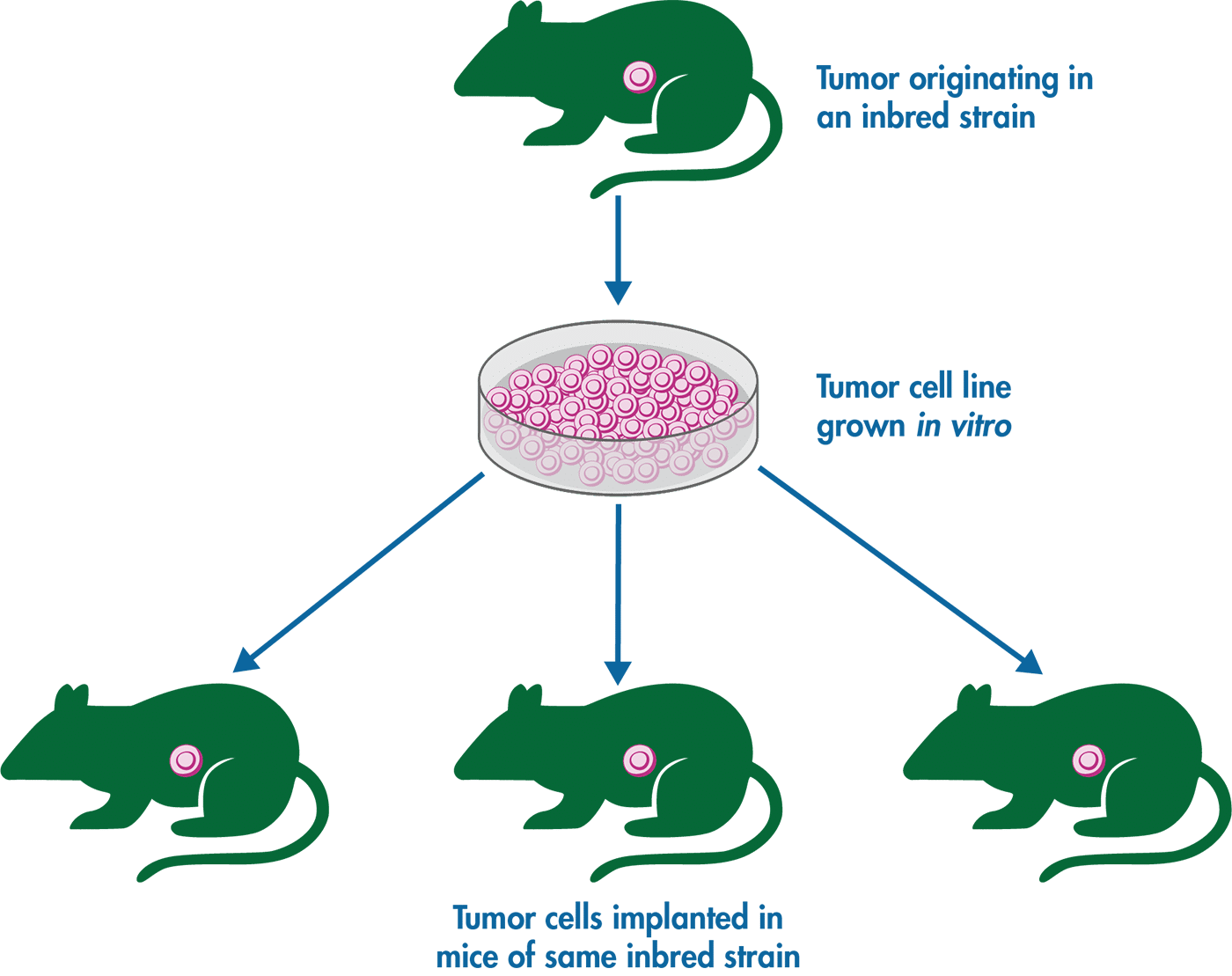The quest to develop new immunotherapeutic medicines relies heavily on effective preclinical research. Central to this research are in vivo animal tumor models with fully functional immune systems. Among these, syngeneic tumor models have emerged as powerful tools, facilitating the testing of innovative immunotherapies. These models are homografts developed from immortalized mouse tumor cell lines originating from the same inbred mouse strains, ensuring a fully competent immune system.
A look into the past
The origins of syngeneic mouse models date back to the 1940s when researchers began using inbred mouse strains to study cancer. This genetic uniformity allowed scientists to develop syngeneic models by transplanting cancer cells from one mouse to another without the risk of rejection, enabling them to observe how the immune system combats cancer without interference from other variables. Over the years, the development of these models has progressed significantly, offering a more precise representation of the complex interactions between the immune system and cancer cells. Recently, researchers have integrated syngeneic models with advanced genetic engineering techniques to create mice with specific genetic modifications. This innovation has facilitated the study of the effects of genes on cancer development and the immune response, enhancing our understanding and paving the way for novel therapeutic strategies.

Schematic depicting the establishment of syngeneic models for cancer research
Why Syngeneic Matter
Syngeneic tumor models are ideal for evaluating new single and combinational immunotherapies due to several key advantages. These models possess a complete and functional immune system, which is crucial for studying interactions between tumors and immune cells. Additionally, the tumor, immune system, and stroma in syngeneic models are genetically matched, ensuring more accurate and reliable results. Furthermore, their compatibility with genetically engineered mice (GEMs) provides greater flexibility in experimental designs, accommodating both existing and custom GEMs.
Discover our Syngeneic Models
Get deeper insights for effective IO therapies
Deciphering the Immune Landscape
Immune profiling is immensely beneficial in the field of immunotherapy because it provides a comprehensive understanding of how the immune system responds to cancer and to the therapies designed to treat it. Since immuno-oncology (IO) therapies work by modulating the immune system, it is essential to grasp the intricacies of these interactions to enhance therapeutic efficacy and predict patient outcomes. Syngeneic models can be applied to immune profiling to:
- Determine Tumor Inflammatory Status: This guides model selection for efficacy and pharmacodynamic (PD) studies.
- Assess Abundance of Therapeutic-Relevant Effector Cells: Essential for evaluating the effectiveness of therapies in PD studies.
- Measure Infiltration of Immune Cells: Confirms the mechanism of action (MoA) of the therapy.
- Evaluate Activation and Exhaustion Status of Immune Cells: Helps understand the PD effects of the therapeutic.
- Monitor Systemic Inflammatory Responses: Tracks responses such as cytokine-release syndrome and cytokine storm.
- Detect Off-Target or Toxic Effects: Through profiling of non-target tissues, ensuring the safety of treatments.
SynScreen PD Mode
Investigate the pharmacodynamics of your immunotherapy and discover promising candidates
Methods of Immune Profiling
Methods such as flow cytometry, mass cytometry (CyTOF), immunohistochemistry (IHC), next-generation sequencing (NGS), and multiplex spatial tissue analysis (MSTA) are commonly employed for immune cell profiling. Flow cytometry is a cost-effective tool for quantifying immune cells and their activation states. However, conducting a comprehensive analysis of numerous immune cell populations in a single tumor can be challenging when only limited material is available, such as with small tumors responding to treatment or at early developmental stages. Hence, a staining panel that enables the analysis of all major immune cell populations in one go is highly advantageous.
Dive deep into data!
Explore our poster presenting our all-in-one staining panel for immune cell profiling in syngeneic models
Conclusion
Syngeneic tumor models are pivotal in advancing immunotherapy by providing a genetically matched immune system for research. Their utilization in immune profiling allows for a comprehensive understanding of cancer immune responses and treatment efficacy, particularly in the case of check point inhibitors. These insights into the effect of an agent on the immune profile within the tumor environment provide key insights for developing safe and effective treatments, improving patient outcomes, and advancing cancer therapeutics.



